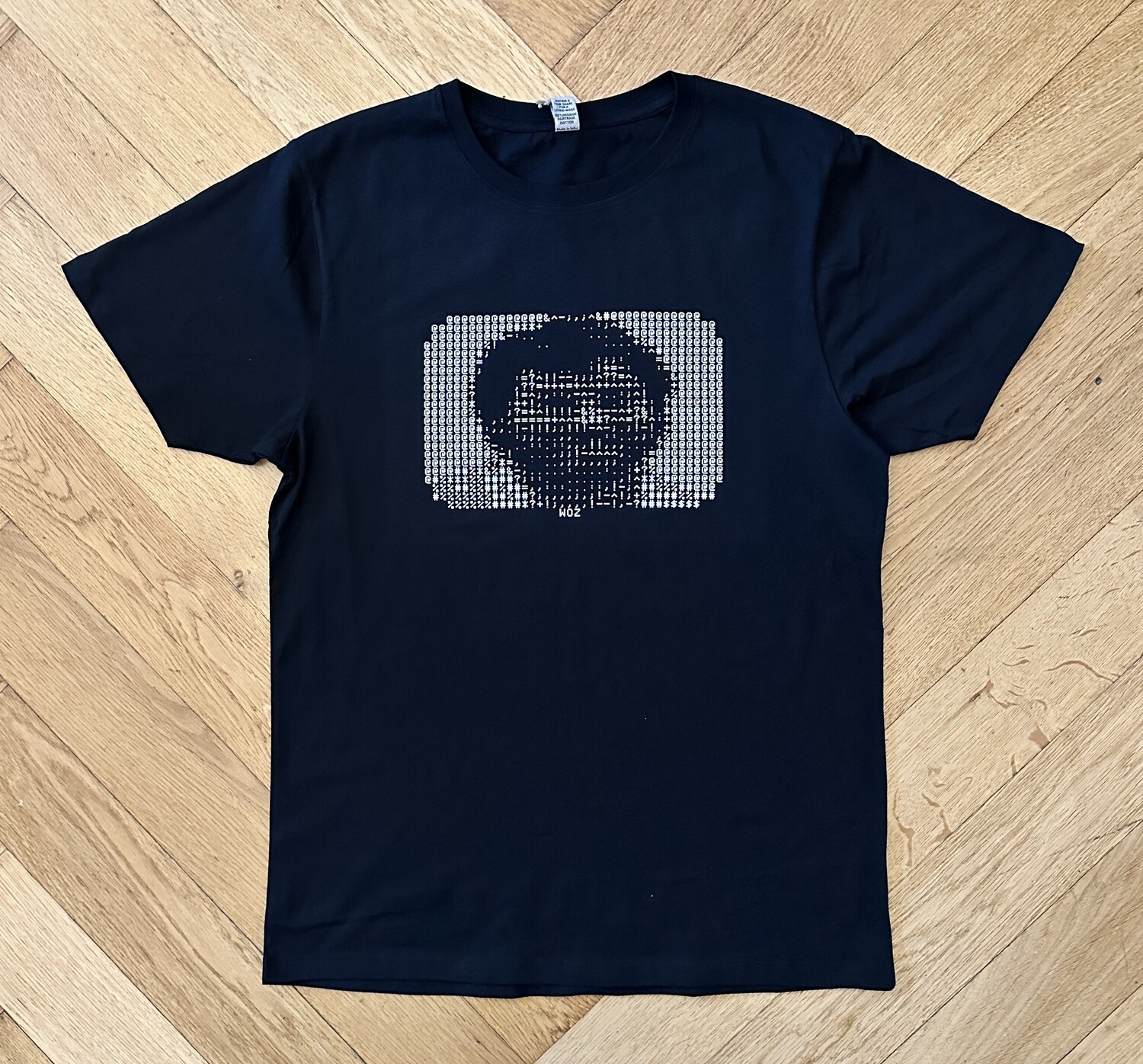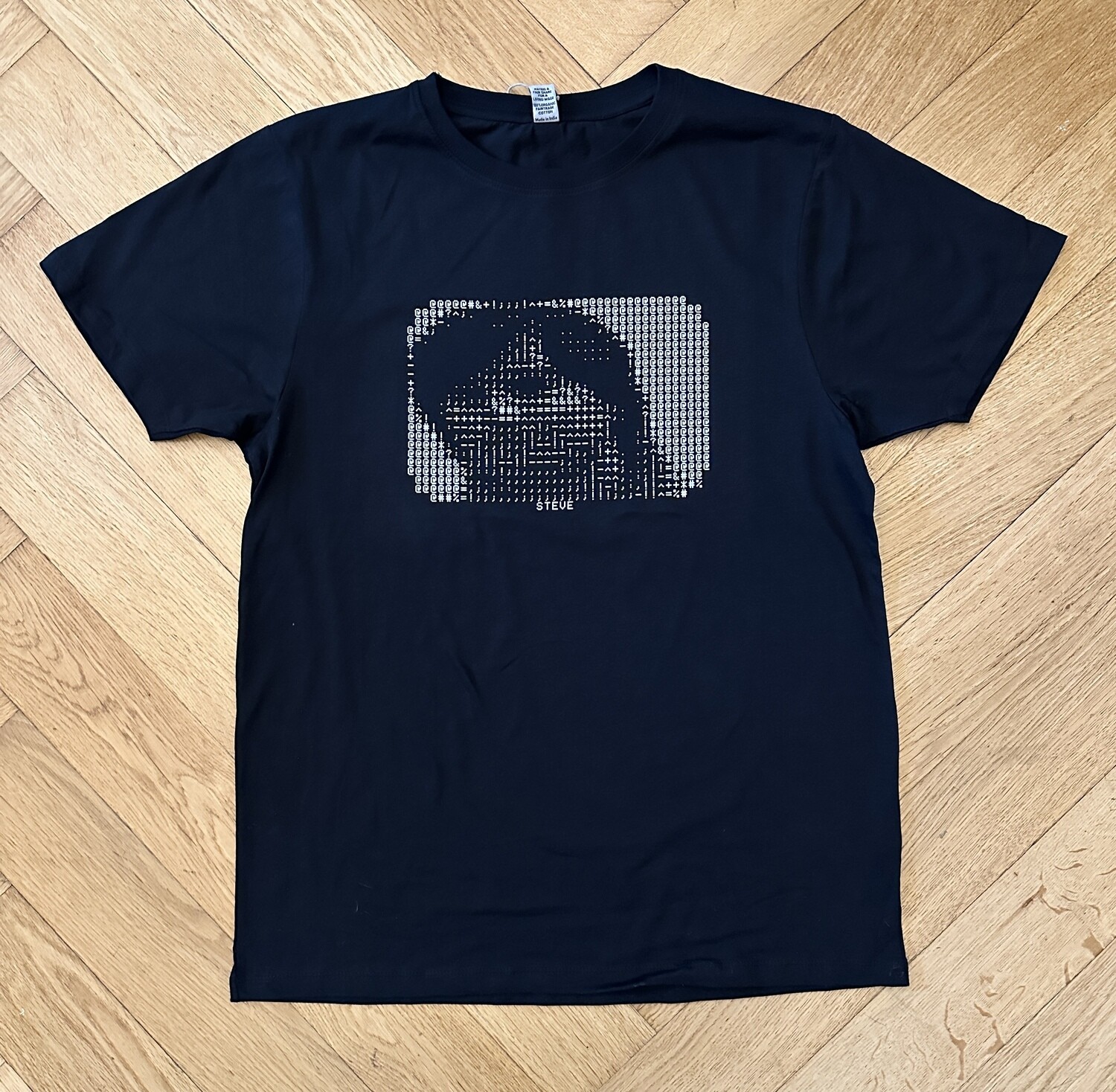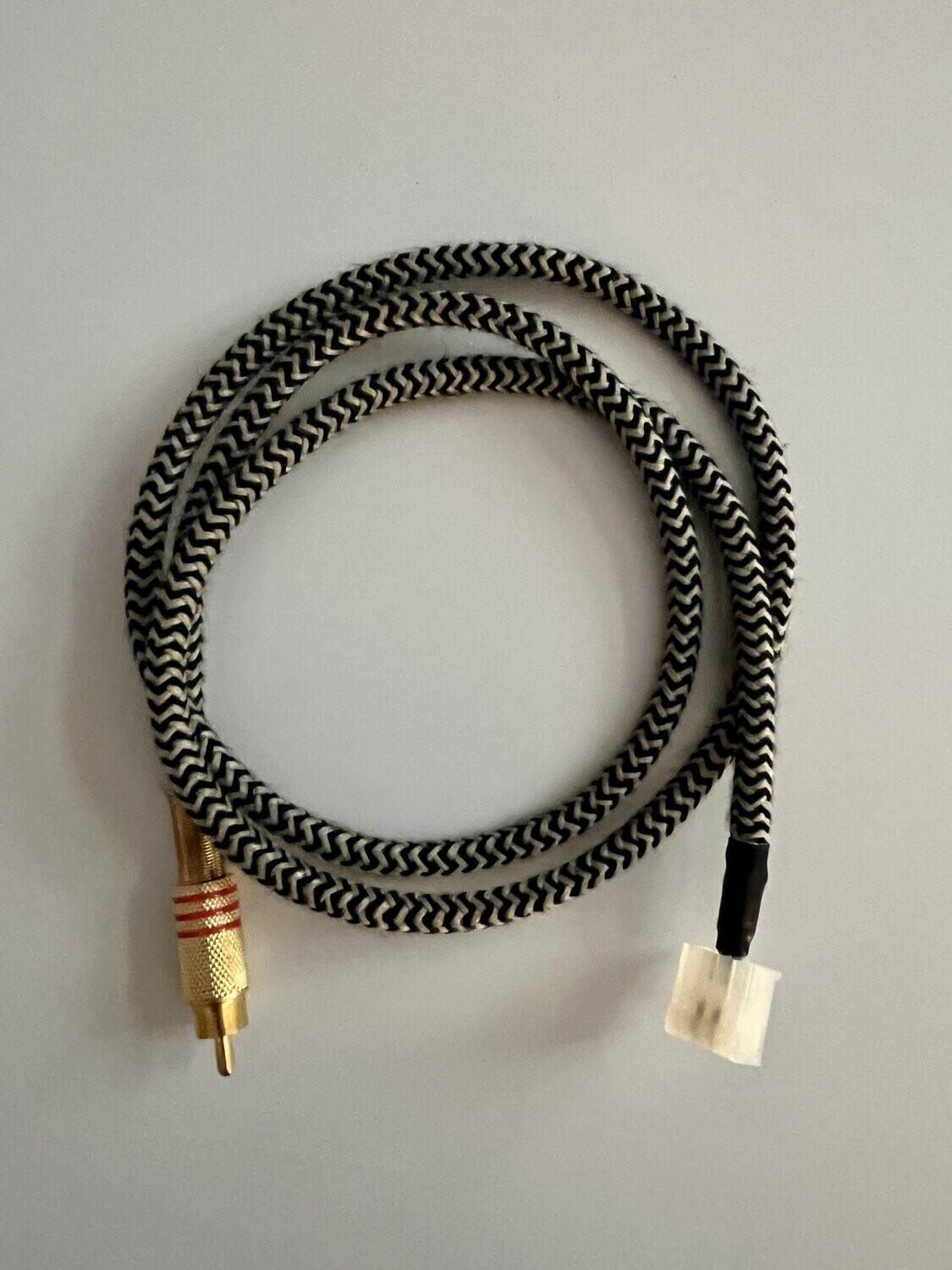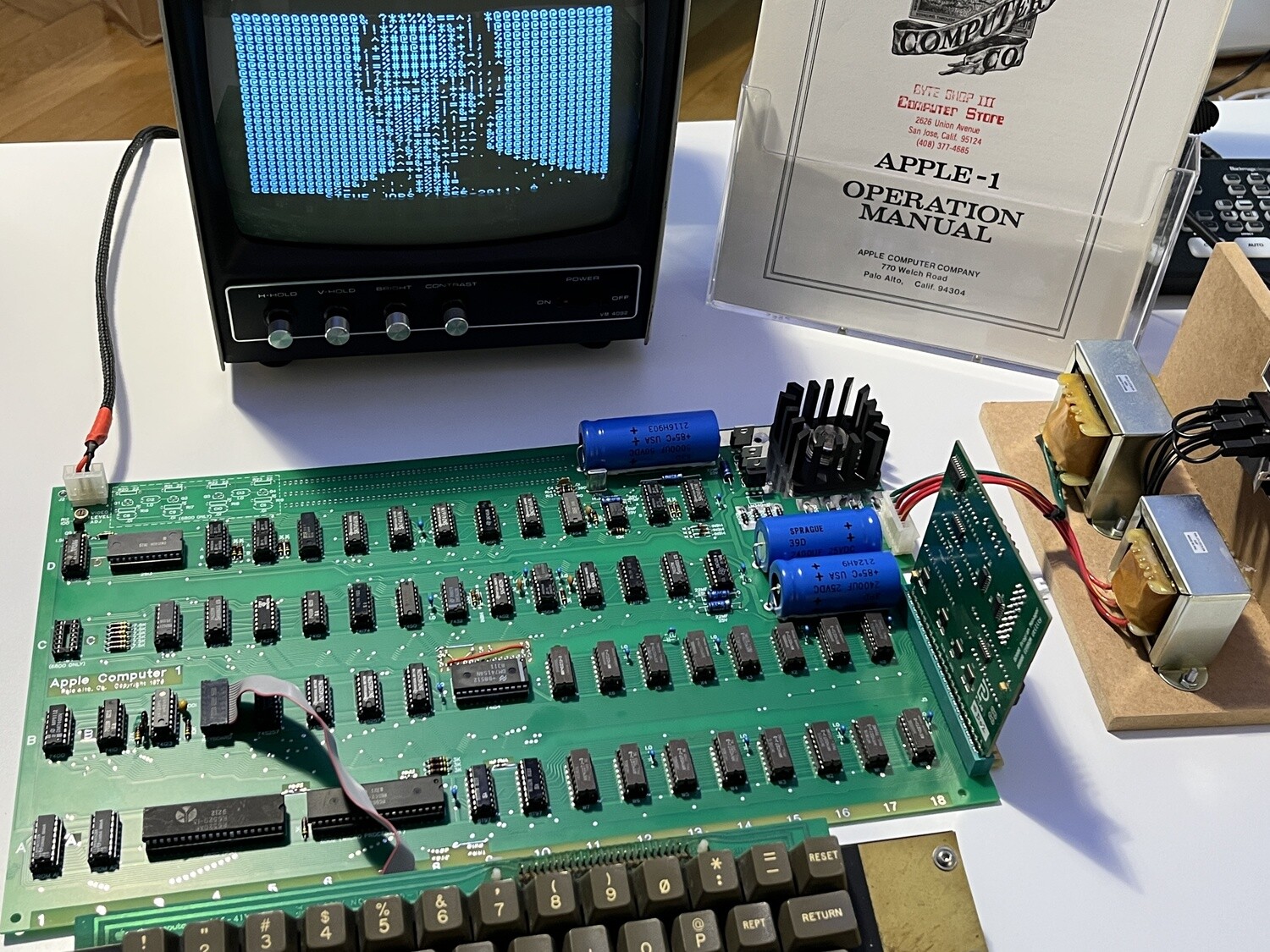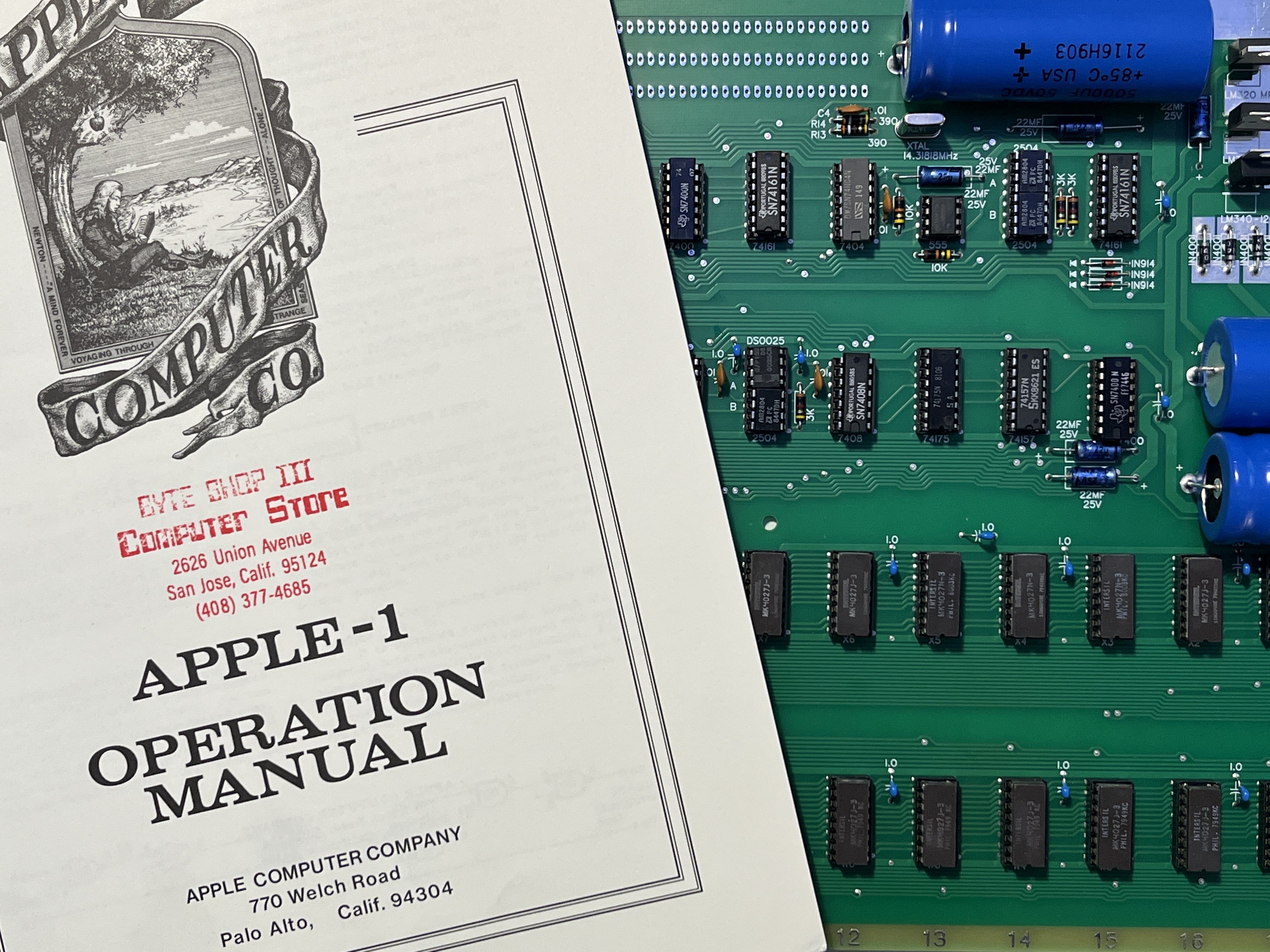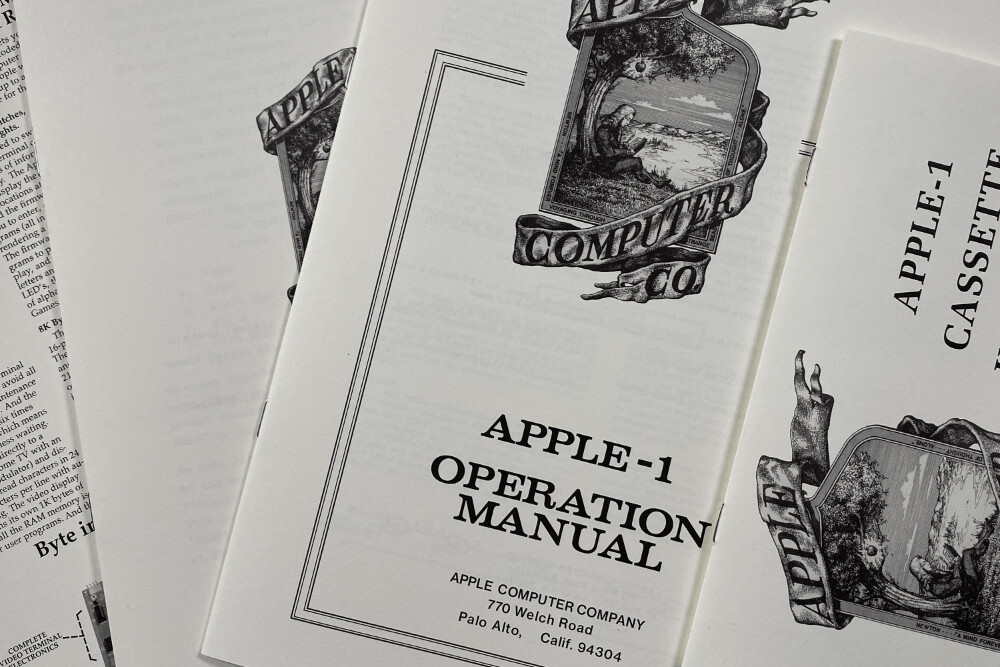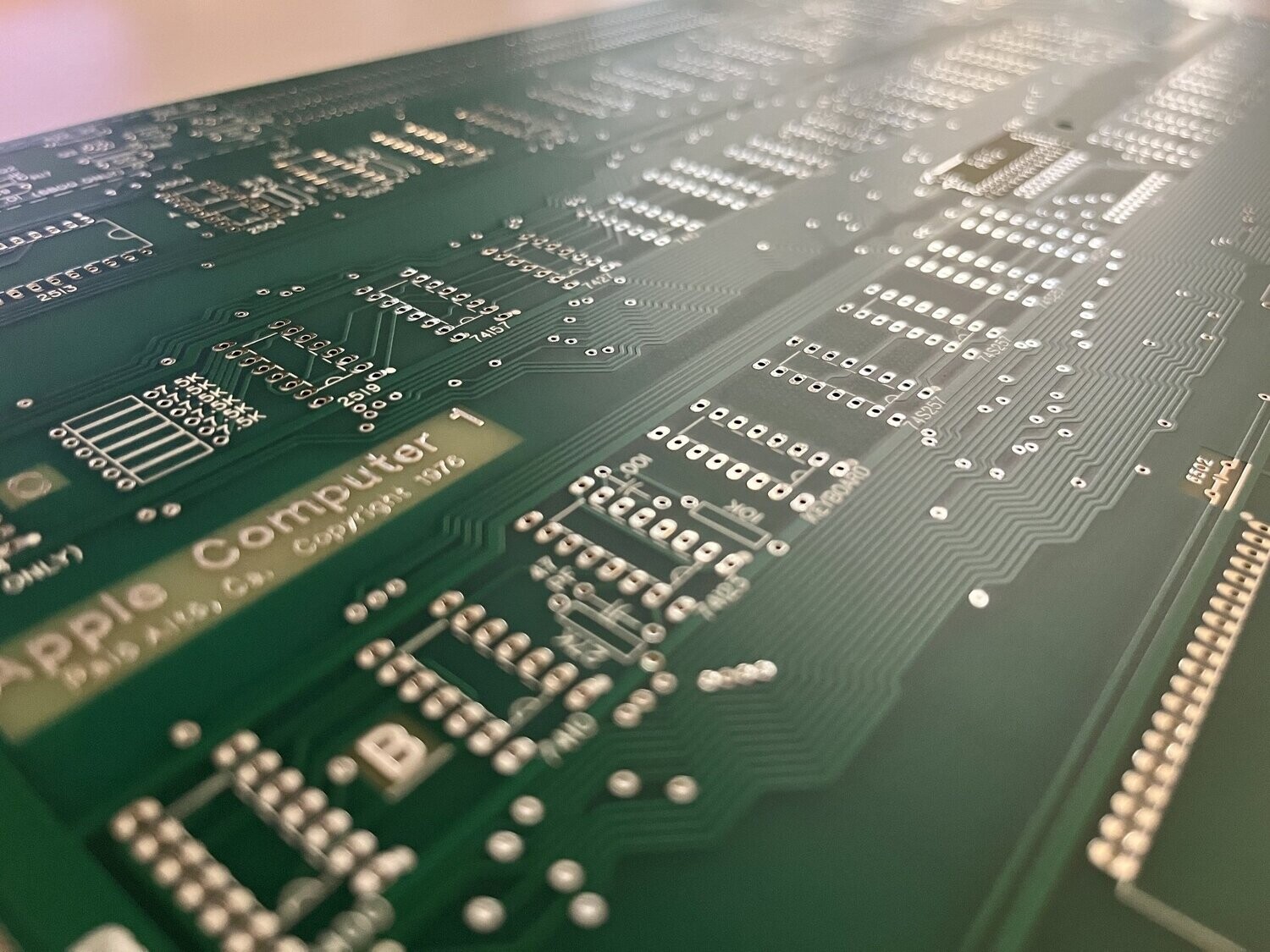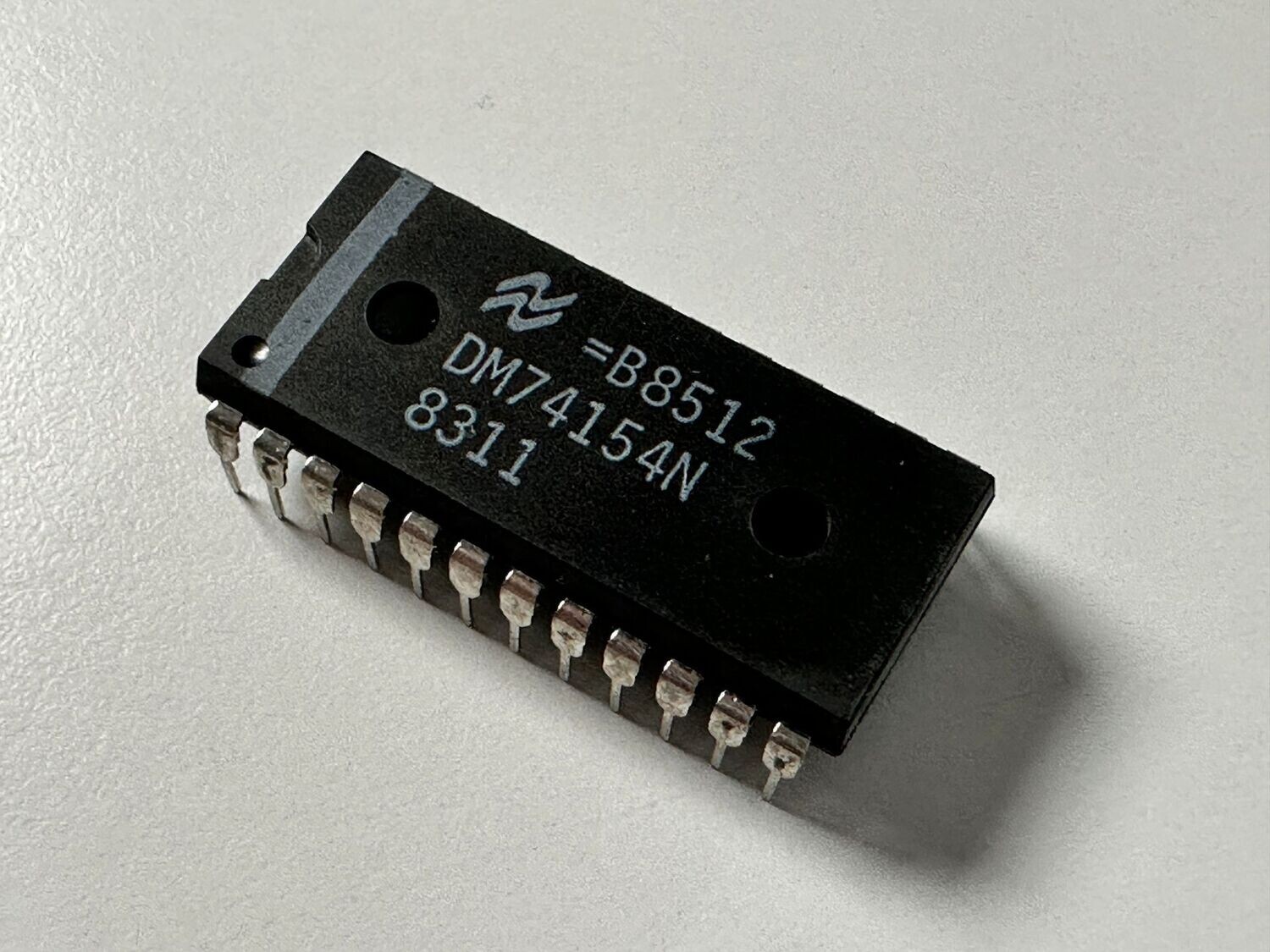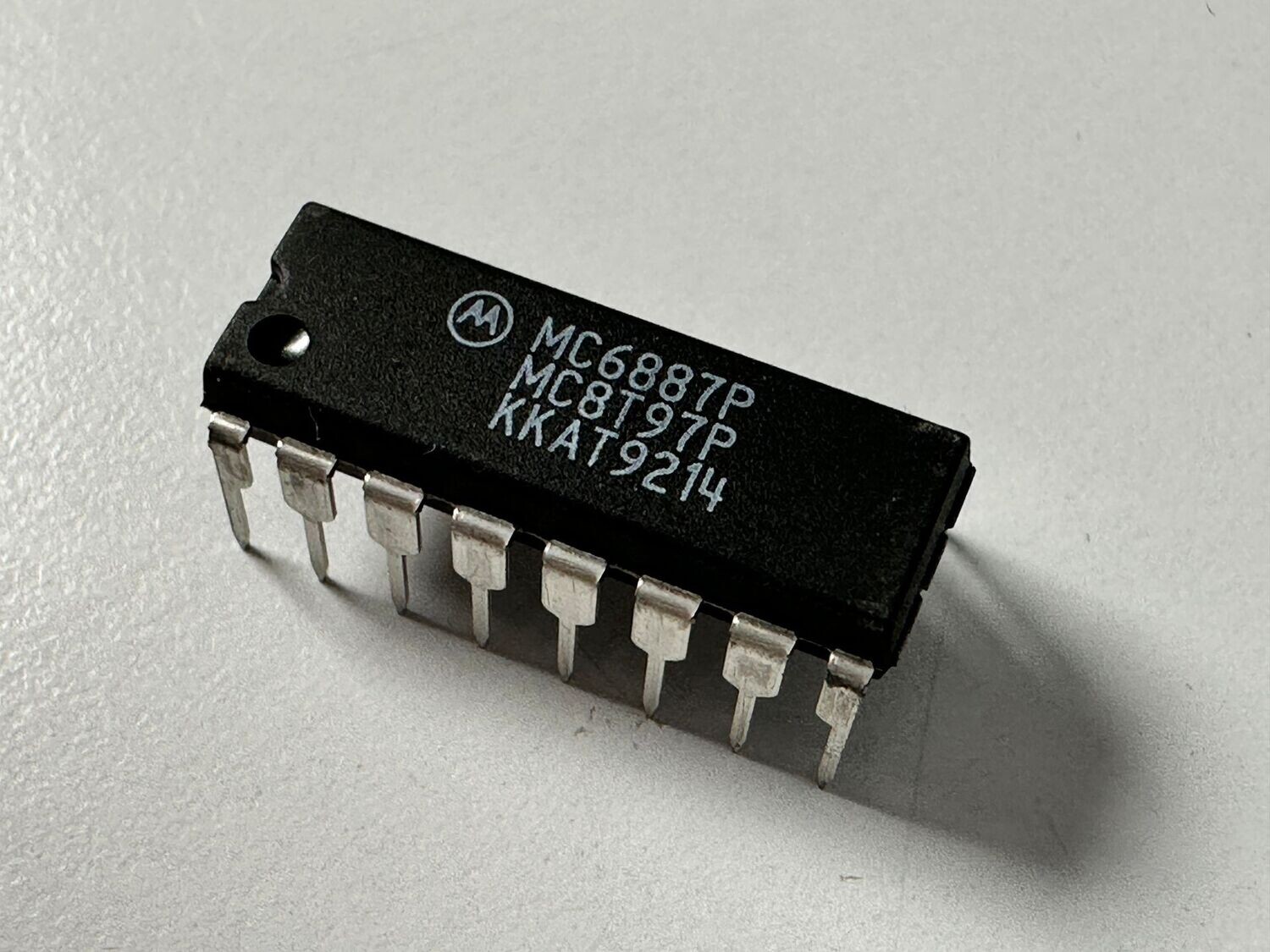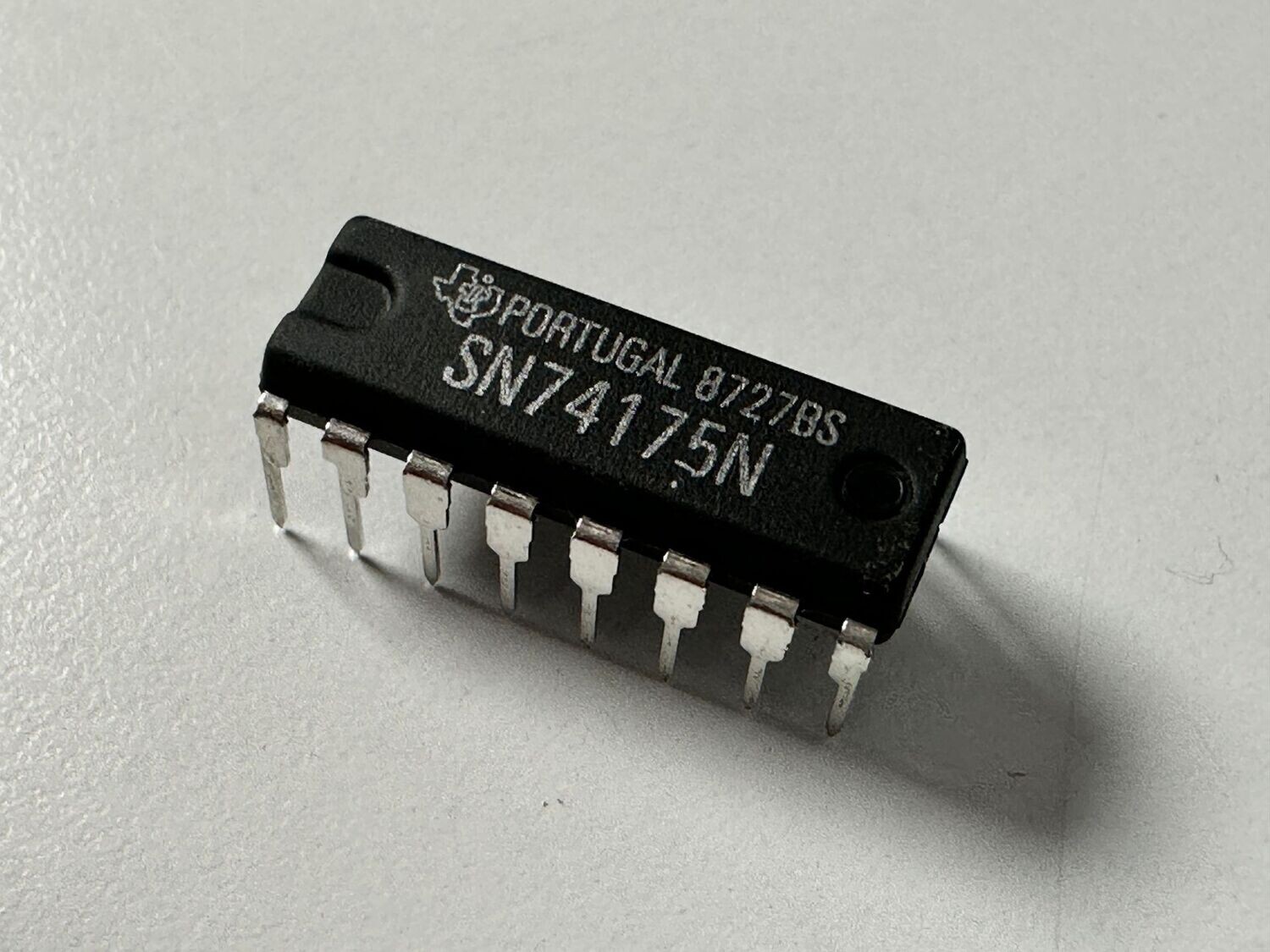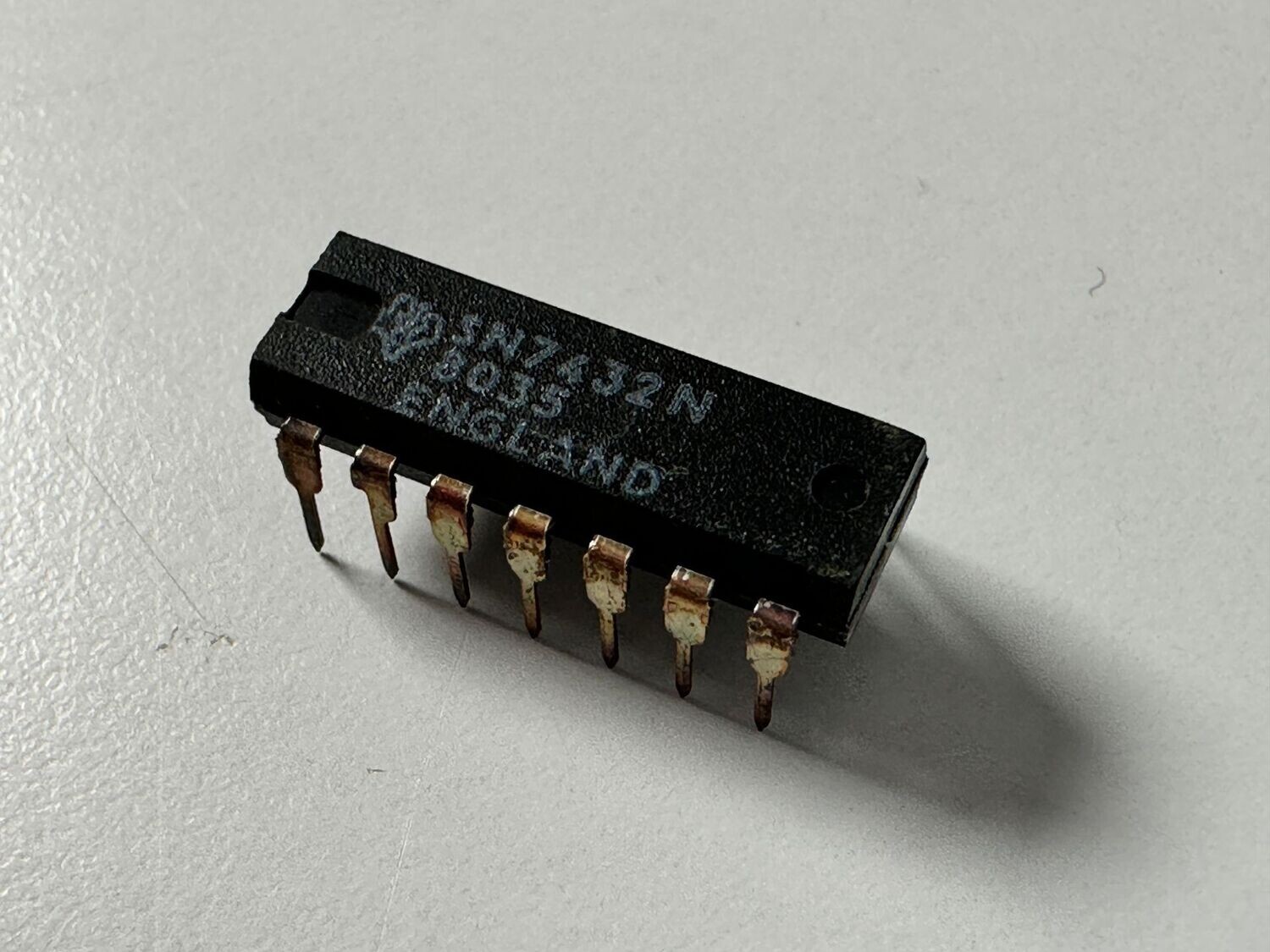On closer inspection of the pictures of lot #8025, I suddenly noticed the same handwritten note that the reprint I bought features. My heart rate doubled in seconds, and all kinds of theories surged in my head: There must have been more than one version of the original manual. And the one in the auction must be a "corrected" version. Yet, I wondered: Why didn't I learn about other versions of the manual during my extensive research (when I created the replicas)? So a different theory took over: This must be the original used as the template for the reprint. Yes, that must be it. Then again: How likely would such a coincidence be? And shouldn't the color of the handwriting differ at least a bit from the rest of the printing? But it doesn't.
The final nail to the coffin: The saddle-stitching. First, I compared the position of the staples shown in the auction's pictures with the reprint I bought from the forum user:
They were identical.
Then I compared them to other photos of original manuals shown online:
Not. Even. Close.
So it became overwhelmingly clear to me that somebody out there paid 42,660 USD for a reprint. I double-checked and triple-checked what I thought had happened. Finally, I wrote to Bobby Livingston, Executive Vice President of Public Relations, to share my findings and some questions regarding the case. Within a few hours, Bobby wrote back:
As I hope you know, RR Auction takes authenticity very seriously, and we'll look into your concerns. Kindly allow us time to examine the copy that we have sold.
48 hours later, Bobby came back again:
We agree with your findings that this is a replica. We were unaware of the replicas made in the 1980s. Thank you for educating us. We reached out to the winning bidder and offered him a full refund. He's asked to purchase the replica for a few thousand dollars because he enjoys it. We will be refunding the balance. The consigner is very well known to us and not a nefarious person. We did show it to our expert, but we only provided him with scans. Upon further review, and again with gratitude, we agree that the annotation is printed. We will make sure this never happens again.
The seller, according to applemust.com,
bought the reprint at a German flea market in 1986 (which totally makes sense as the reprint was done in Germany in the first place – see above). Not being aware of the existence of a reprint, he assumed it must be an original and kept it in a drawer for decades before he eventually decided to auction it.
I appreciate the swift action and transparency that RR Auction has shown over the whole matter. Selling a reprint as an original is the very last thing any auction house wants to be convicted of. After this week's news, I can well imagine that stress levels rose to an all-time high at RR Auction. Still, RR Auction kept a professional and decent demeanor throughout. And while you could argue that this is nothing to praise but to expect, I have experienced it differently with other companies.
There is one more thing: When I created the Apple-1 Manual replicas, a few Apple enthusiasts blamed me for opening the doors for deception and fraud. That my work would be used as a basis by hordes of forgers who would flood the market with "originals." All of this is utter nonsense, of course. Apart from the fact that you can tell "my" manual replicas from an original quickly (although they are insanely accurate), it would be much more convincing to simply scan and reprint an original manual. How do I know? Well, in March 2022, that approach fooled an entire auction house, including their external experts. But in the end, all is well. The buyer got his money back, and everybody learned a bit. And that's never a bad thing, I guess.
Want to get your hands on an insanely accurate replica of the Apple-1 manuals? Check out the store!

